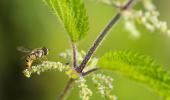Naturally the best!
Possums, primates and disappearing habitats all feature among the first images to be released from the Wildlife Photographer of the Year 2020 awards.
The images include hard-hitting depictions of the devastating impact climate change and the wildlife is having on the environment, among other more playful images of animals spotted in their natural habitats.
The overall winners of the competition will be announced on October 13, with the awards ceremony conducted virtually, for the first time, from the museum's Hintze Hall.
Take a look.
The Rat Game
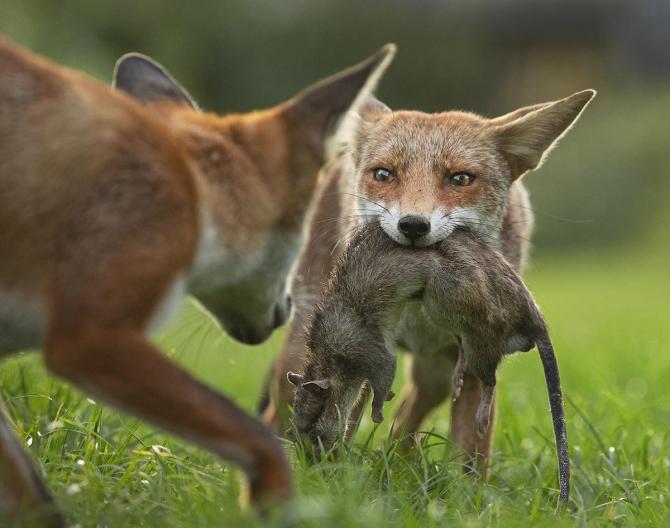
With a determined stare, a young fox holds tight to her trophy -- a dead brown rat -- as her brother attempts to take it off her. For the past four years, Matthew has been photographing the foxes that live on a North London allotment. On this August evening, as Matthew lay prone watching the youngsters at play, one of them exploded out of the bushes with a dead rat in its mouth. The other three then began squabbling over it and a tug-of- war developed. When one got the prize, it would repeatedly toss it into the air and catch it. Photograph: Matthew Maran/Wildlife Photographer of the Year
Surprise!
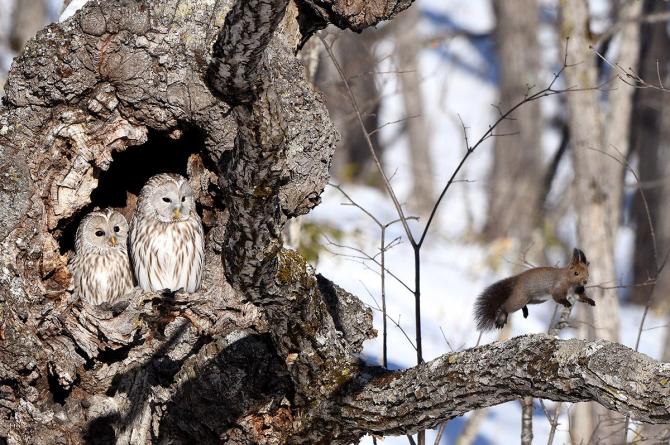
A red squirrel bounds away from its surprise discovery -- a pair of Ural owls, very much awake. In forest near his village on the Japanese island of Hokkaido, Makoto had spent three hours, in freezing conditions, hiding behind a nearby tree hoping that the owl couple would pose or perform. Suddenly, a squirrel appeared from the treetops. ‘It was extraordinary to see them all in the same tree,’ says Makoto. Rather than fleeing, the curious squirrel approached and peered into the owls’ hole, first from the top, then from the side. ‘I thought it was going to be caught right in front of me,’ says Makoto, ‘but the owls just stared back.’ The curious squirrel, as if suddenly realising its mistake, leapt onto the nearest branch and sped away into the forest. With equally quick reactions, Makoto managed to frame the whole story -- the squirrel’s escape, the owls’ expression and a soft hint of the wintry forest landscape. Photograph: Makoto Ando/Wildlife Photographer of the Year
Paired-up Puffins
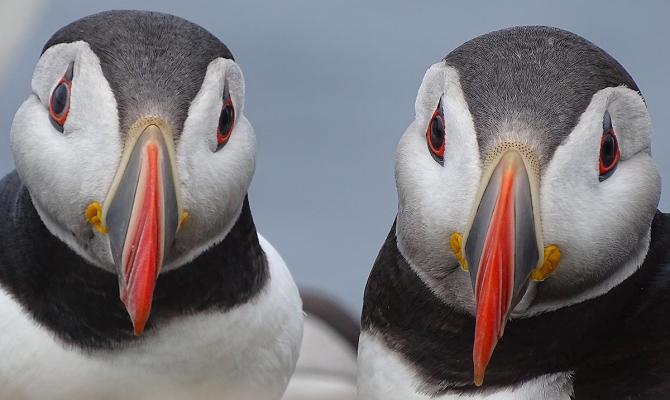
A pair of Atlantic puffins in vibrant breeding plumage pause near their nest burrow on the Farne Islands. Every spring, these small islands off Northumberland attract more than 100,000 breeding pairs of seabirds. Evie had longed to see a puffin, and when school broke up, she and her family managed two day trips to Staple Island in July, before the puffins returned to sea in August. She stayed by the puffins’ burrows, watching the adults returning with mouthfuls of sandeels. Puffins are long-lived and form long-term pairs, and Evie concentrated on this pair, aiming for a characterful portrait. Photograph: Evie Easterbook/Wildlife Photographer of the Year
The Perfect Catch
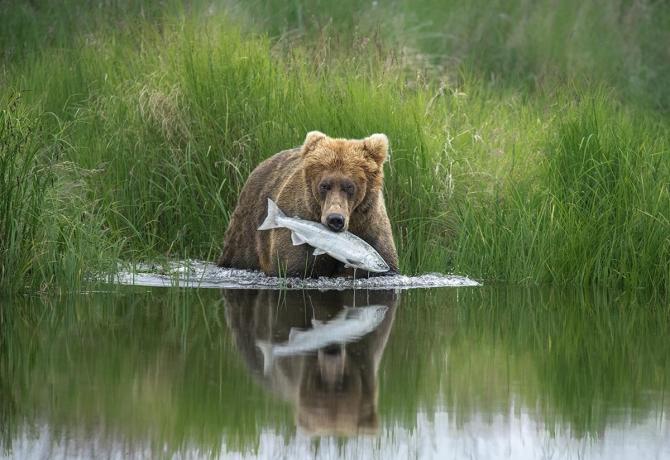
A brown bear pulls a salmon from the shallows of a river in Alaska’s Katmai National Park. Here, the bear has caught a sockeye still in its ocean form (before it has developed its reproductive red colour and pronounced jaws). Hannah chose to focus on a quieter scene and a different style of fishing. Instead of snatching at leaping fish or jumping on them, this female put her head under the water to look for one. Hannah had been watching for some time before she achieved the composition she wanted: a full reflection of the bear -– and its catch -- in still water. Photograph: Hannah Vijayan/Wildlife Photographer of the Year
Head Start

Ever watchful, a large male gharial -- at least 4 metres (13 feet) long -- provides solid support for his numerous offspring. It is breeding season in the National Chambal Sanctuary in Uttar Pradesh,northern India, and this usually shy reptile now exudes confidence. This male was left in sole charge of his month-old offspring, observes Dhritiman, but both sexes are known to care for their young. So as not to disturb the gharials, he spent many days quietly watching from the riverbank. His picture encapsulates at once the tenderness of a protective father and its ‘don’t mess with my offspring’ attitude. Photograph: Dhritiman Mukherjee/Wildlife Photographer of the Year
Amazon Burning
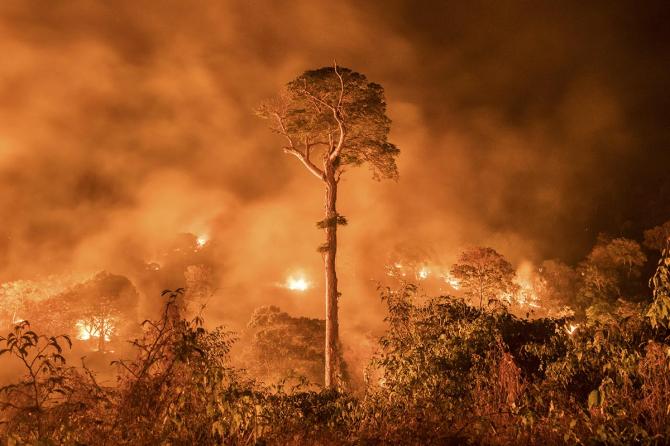
A fire burns out of control in Maranhão state, northeastern Brazil. A single tree remains standing -- ‘a monument to human stupidity’, says Charlie, who has been covering deforestation in the Amazon for the past decade. The fire would have been started deliberately to clear a logged area of secondary forest for agriculture or cattle farming. In 2015, more than half the state’s primary forest was destroyed by fires started by illegal logging on indigenous land. Burning has continued in the state, exacerbated by drought, as land has been cleared, legally and illegally. In the past year, invasion of indigenous reserves and conservation areas by loggers and land-grabbing ranchers has increased, emboldened by President Jair Bolsonaro’s commitment to open up the Amazon for business and his attacks on indigenous groups. Photograph: Charlie Hamilton James/Wildlife Photographer of the Year
Treetop Douc

When his father planned a business trip to Vietnam, Arshdeep researched the wildlife online. It was after he read about the endangered red-shanked douclangur that he asked his father to take him along. The meeting was near Son Tra Nature Reserve, Vietnam’s last coastal rainforest and a stronghold for the langur. Found only in Vietnam, Laos and Cambodia, the primate is threatened by habitat loss, hunting and trade. Arshdeep had just three days at Son Tra. His long wait was rewarded when a male appeared in a tree on the slope opposite. It was a struggle to hold his telephoto lens steady and shoot at an angle clear of leaves, and just for a second, the langur glanced at him -- the moment Arshdeep had come to Vietnam for. Photograph: Arshdeep Singh/Wildlife Photographer of the Year
The Spider's Supper
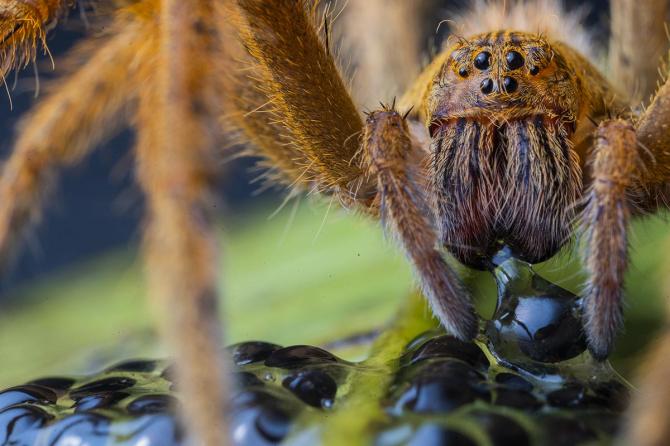
A large wandering spider -- black, hooked fangs tipping its bristly, striped mouthparts -- pierces the egg of a giant glass frog, injects digestive juices and then sucks in its liquefied prey. Jaime hadwalked for hours, in darkness and heavy rain, to reach the stream in Manduriacu Reserve, northwestern Ecuador, where he hoped to find glass frogs mating. But his reward turned out to be a chance to photograph a behaviour he had seldom seen -- a wandering spider with an 8-centimetre (3-inch) leg span devouring the frogs’ eggs. Jaime set up his shot to capture the precise moment the female spider grasped the thin jelly coating between her fangs, steadying the egg with her long, hairy palps. One by one -- over more than an hour -- she ate the eggs. Photograph: Jaime Culebras/Wildlife Photographer of the Year
Peeking Possums

Two common brushtail possums -- a mother (left) and her joey -- peek out of their hiding place under the roof of a shower block in a holiday park in Yallingup, Western Australia. Gary had watched them all week. They would pop up at sunset, keep an eye on the campers till dark, then squeeze out through the gap and head for the trees to feed on the leaves of a peppermint tree. Thecurious possums -- probably used to being fed by other campers -- stuck their heads out and peered at the interesting man and his camera. He quickly framed their little faces beneath the corrugated iron roof, capturing a sense of their vulnerability, along with their resourcefulness. Photograph: Gary Meredith/Wildlife Photographer of the Year
Eye of the Drought

An eye blinks open in the mud pool as a hippopotamus emerges to take a breath -- one every three to five minutes. The challenge for Jose, watching in his vehicle, was to catch the moment an eye opened. For several years, Jose has been watching hippos in Kenya’s Maasai Mara National Reserve -- here in a remnant of the drought-stricken Mara River. Hippos spend the day submerged to keep their temperature constant and their sensitive skin out of the sun, and at night they emerge to graze on the floodplains. Photograph: Jose Fragozo/Wildlife Photographer of the Year
Memorial to the albatrosses
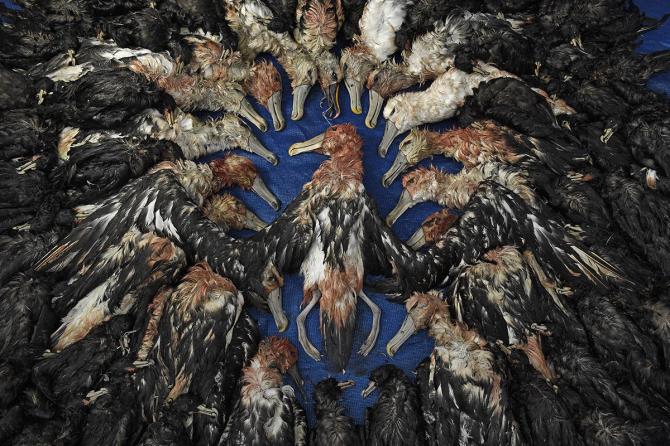
Unlikely as it seems, this display illustrates a South African conservation success story. It represents the comparatively smaller number of deaths of seabirds –- here shy albatrosses and a yellow-nosed albatross (a longline hook still in its bill) and white-chinned petrels -- caught in 2017 on longlines set by Japanese tuna-fishing boats off South Africa’s coast. Photograph: Thomas P Peschak/Wildlife Photographer of the Year
A Risky Business
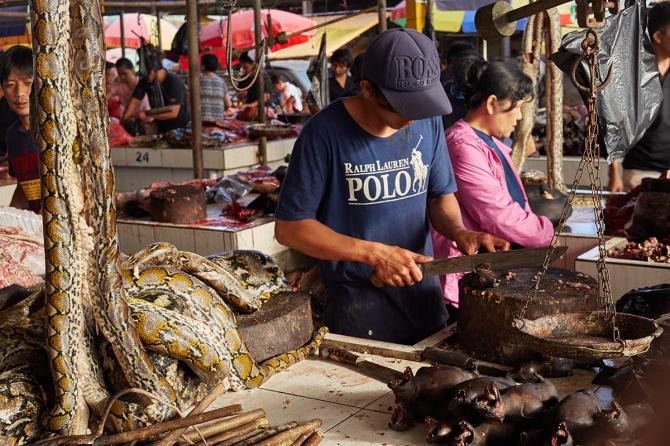
A market trader slicing up fruit bats is surrounded by his other wildlife wares: pythons to his right, with bamboo-skewered ‘bush’ rats beneath them. This is Tomohon Market in northern Sulawesi, Indonesia. Quentin observed the reality of the bushmeat trade, with wild animals in poor condition kept alive, tied to ropes or piled up in cages, awaiting butchery. Hewas struck by the juxtaposition of contrasting economies: the name-brand clothes of the stallholders amid the wild-animal body parts. The variety of bushmeat on sale here -- which at one time included that of endangered primates -- has put Tomohon, billed as an ‘extreme’ food market, on the tourist trail. Photograph: Quentin Martinez/Wildlife Photographer of the Year
The Forest Born of Fire

The Araucanía region of Chile is named after its Araucaria trees -- here standing tall against abackdrop of late-autumn southern beech forest. Andrea had been enchanted by this sight a year previously and had timed his return to capture it. He hiked for hours to a ridge overlooking the forest and waited for the right light, just after sunset, to emphasize the colours. The trunks gleamed like pins scattered on the landscape, and he framed the composition to create the feeling that the whole world was clothed in this strange forest fabric. Photograph: Andrea Pozzi/Wildlife Photographer of the Year
The Night Shift
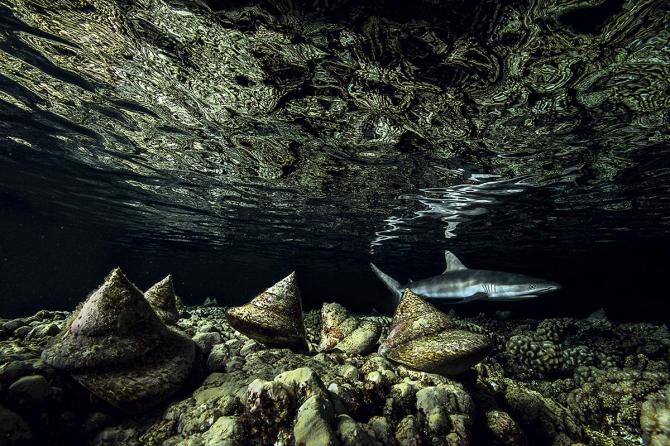
IMAGE: As darkness falls on the remote coral Fakarava Atoll, in French Polynesia, the molluscs begin to move. These large topshells -- reaching 15centimetres across the base -- spend the day hiding in crevices among corals, usually on the outer fringes of the reef, withstanding the strong currents and surf. At night, they emerge to graze on algal pavements and coral rubble. Cruising behind these slow grazers is one of the reef’s top predators -- a grey reef shark, nearly 2 metres (6½ feet) long–capable of speeds of nearly 50kilometres (30 miles) per hour and ready for a night’s hunting. It pinpoints prey (mostly bony reef fish) with its acute senses and often hunts in packs. Using a wide angle, Laurent framed the night life stirring beneath the reflections of the reef, contrasting the close-up, angular topshells with the sleek predator behind. Photograph: Laurent Ballesta/Wildlife Photographer of the Year
World of tar
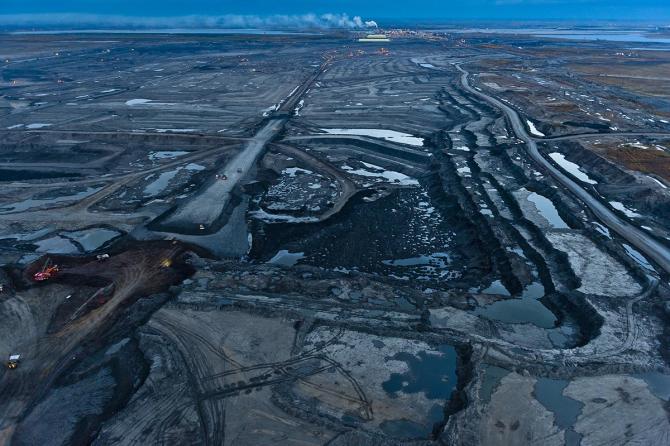
As twilight falls on the Alberta tar sands, the stripped landscape takes on an oily blue tint. This vast expanse -- once boreal forest -- is just one section of the Mildred Lake Tar Mine, itself just one of the region’s many tar mines that together form the world’s third largest oil reserve. To convey the scale of the operations, Garth chartered a plane and flew over the desolate landscape, choosing the early evening light for contrast and mood. The trucks in the foreground are the height of a two-storey house but are dwarfed by the giant open pit behind. The terraced strips lead towards a refinery -- fronted by
enormous yellow sulphur piles -- and the Athabasca River beyond. All around the pit are tailings waste ponds, which contain a slurry so toxic that birds have to be prevented from landing on them. Photograph: Garth Lenz/Wildlife Photographer of the Year
Wind birds
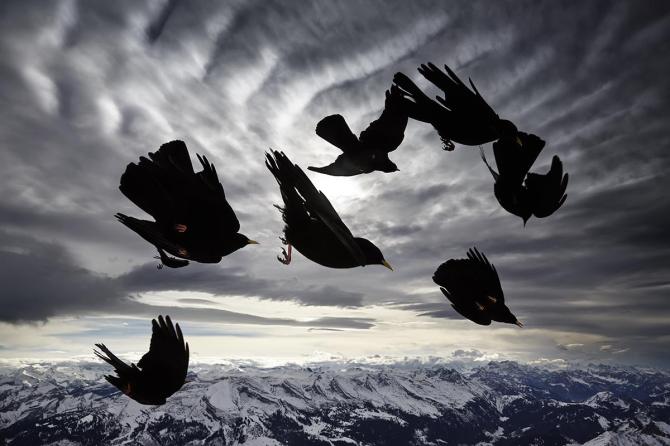
Blasted by the wind, high on the Alpstein Massif of the Swiss Alps, Alessandra could barely stand, but the yellow-billed choughs were in their element. These gregarious mountain birds nest in rocky ravines and on cliff faces, staying with their partners throughout the year. They feed mostly on insects in summer, and berries, seeds and human food waste in winter – boldly scavenging in flocks around ski resorts. They are constantly on the move looking for food, and as a scavenging flock drew closer, Alessandra could hear them shrieking ‘so loud and insistent in the dramatic landscape -- it was like being in a thriller movie’. Taking advantage of gusts of wind sweeping the birds towards her and slowing their path, she captured their’ impressive acrobatics -- one in characteristic headlong plunge–against the
moody sky and jagged, snow-capped mountains. Red feet and yellow bills accent the monochrome of her atmospheric picture. Photograph: Alessandra Meniconzi/Wildlife Photographer of the Year




















